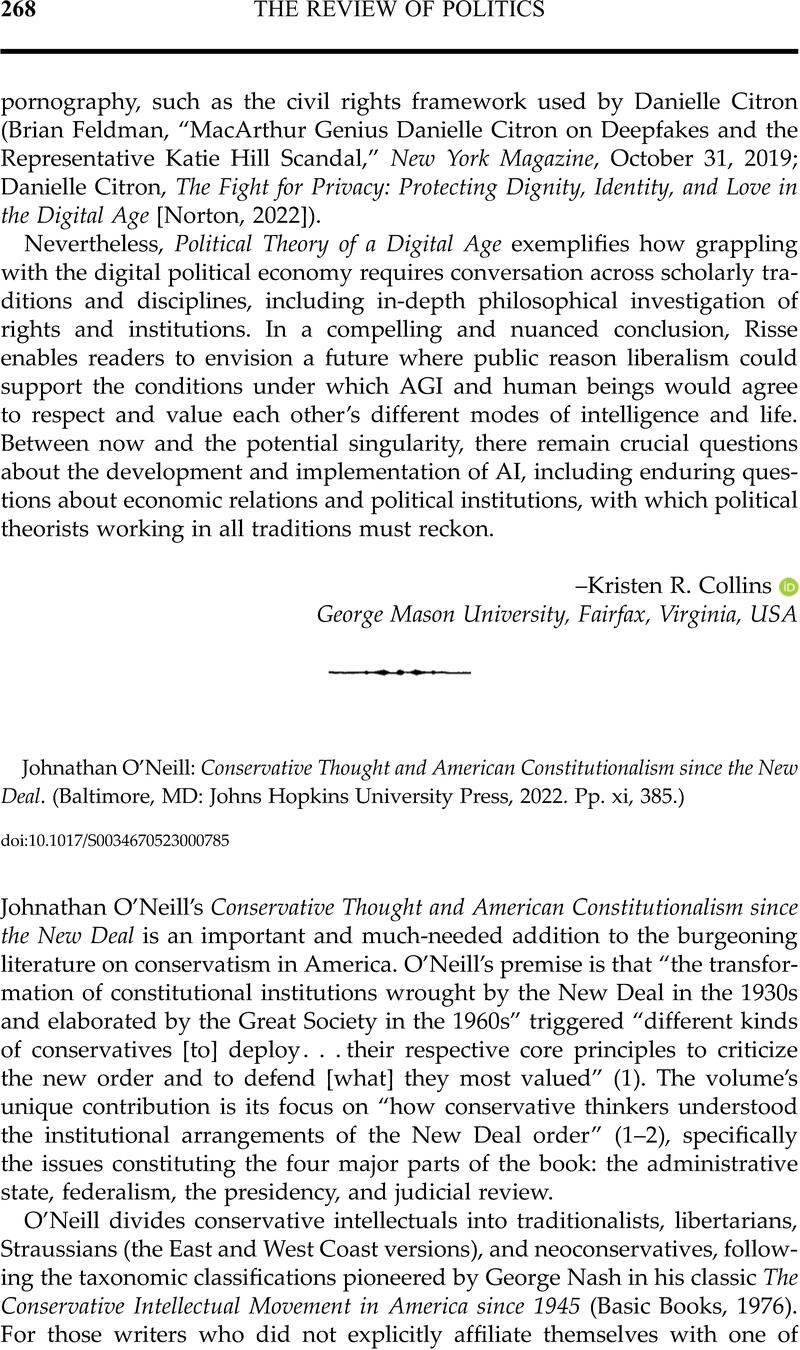No CrossRef data available.
Article contents
Johnathan O'Neill: Conservative Thought and American Constitutionalism since the New Deal. (Baltimore, MD: Johns Hopkins University Press, 2022. Pp. xi, 385.)
Review products
Johnathan O'Neill: Conservative Thought and American Constitutionalism since the New Deal. (Baltimore, MD: Johns Hopkins University Press, 2022. Pp. xi, 385.)
Published online by Cambridge University Press: 08 January 2024
Abstract
An abstract is not available for this content so a preview has been provided. Please use the Get access link above for information on how to access this content.

- Type
- Book Review
- Information
- Copyright
- Copyright © The Author(s), 2024. Published by Cambridge University Press on behalf of University of Notre Dame


